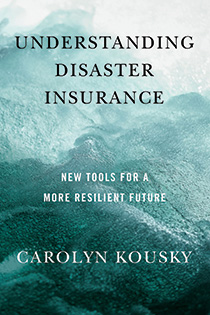The frequency and intensity of natural disasters—such as wildfires, hurricanes, floods, and storms—is on the rise, threatening our way of life and our livelihoods. Managing this growing risk will be central to economic and social progress in the coming decades. Insurance, an often confusing and unpopular tool, will be critical to successfully emerging from the effects of these crises. Its traditional role is to protect us from unforeseen and unanticipated risk, but as currently structured, insurance cannot adequately respond to these types of threats. How can we improve insurance to provide consistent and sufficient help following all disasters? How do we use insurance not just to help us recover, but also to help us prevent disasters in the first place? And how can insurance help us achieve broader social and environmental goals?
Understanding Disaster Insurance provides an accessible introduction to the complexities—and exciting possibilities—of risk transfer markets in the U.S. and around the world. Carolyn Kousky, a leading researcher on disaster risk and insurance, explains how traditional insurance markets came to be structured and why they fall short in meeting the needs of a world coping with climate change. She then offers realistic, yet hopeful, examples of new approaches. With examples ranging from individual entrepreneurs to multi-country collaborations, she shows how innovative thinking and creative applications of insurance-based mechanisms can improve recovery outcomes for people and their communities. She also explores the role of insurance in supporting policy goals beyond disaster recovery, such as nature-positive approaches for larger environmental impact. The book holds up the possibility that new risk transfer markets, brought to scale, could help create more equitable and sustainable economies.
Insurance and risk transfer markets can be a powerful tool for adapting to climate change, yet they are frequently misunderstood. Many find insurance confusing or even problematic and ineffective. Understanding Disaster Insurance is a useful guidebook for policymakers, innovators, students, and other decision makers working to secure a resilient future—and anyone affected by wind, fire, rain, or flood.

